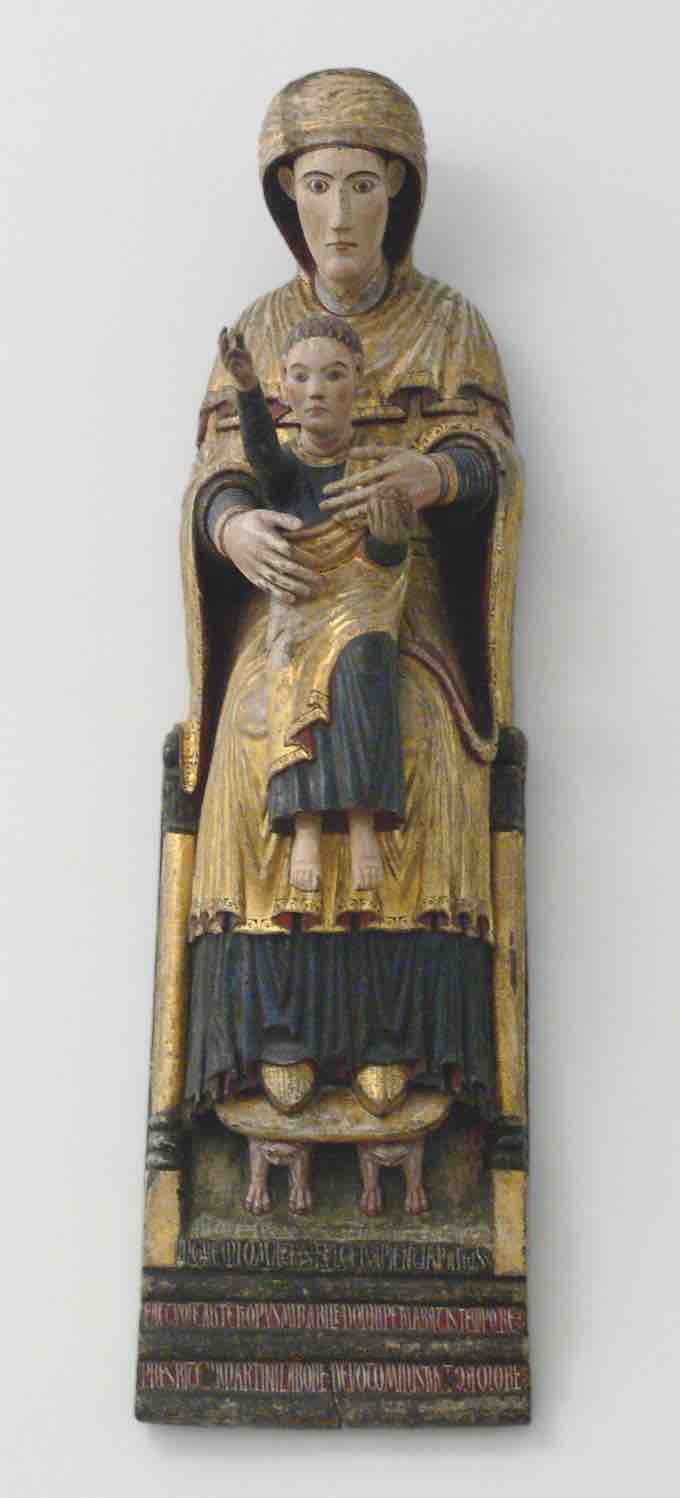Background
In the Roman Catholic tradition, the epithet "the Seat of Wisdom" or "Throne of Wisdom" is identified with one of many devotional titles for the Mother of God. The phrase was characterized in the 11th and 12th centuries by Peter Damiani and Guibert de Nogent. It likens Mary to the Throne of Solomon, referring to her status as a vessel of the incarnation carrying the Holy Child. As the phrase associates the Blessed Virgin with glory and with teaching, Madonna-images in this tradition are especially popular in Catholic imagery.

Mary as the Throne of Wisdom
Madonna as Seat of Wisdom, 1199, inscribed as by Presbyter Martinus, from the Camaldolese abbey in Borgo San Sepolcro near Arezzo, Italy.
Cultural History
In Christian iconography, sedes sapientiae ("The Throne of Wisdom") is an icon of the Mother of God in majesty. When the Virgin is depicted in sedes sapientiae icons and sculptural representations, she is seated on a throne with the Christ Child on her lap.
This type of Madonna-image was a variant of the Byzantine Hodegetria type, in which the Virgin Mary is depicted holding the child Jesus at her side while pointing to him as the source of salvation for mankind. It appeared in a wide range of sculptural and, later, painted images in Western Europe, especially near 1200 CE. In these representations, some structural elements of the throne invariably appear, even if only handholds and front legs. The Virgin's feet often rest on a low stool. Later, Gothic sculptures of the type are more explicitly identifiable with the Throne of Solomon, where "two lions stood, one at each hand. And twelve little lions stood upon the six steps on the one side and on the other" (I Kings 10, 19-20).
Aechen Cathedral, 11th Century
The cloisonné enamel donor plaque with the donor's portrait and the enthroned Madonna, on the processional Cross of Mathilde, Ottonian, early 11th century (Aachen Cathedral)
In addition to Romanesque sculpture, the sedes sapientiae icon appeared in illuminated manuscripts, frescoes, mosaics, and seals of the time. The icon additionally possesses emblematic verbal components: the Virgin as the Throne of Wisdom is a trope of Damiani or Guibert de Nogent, based on their typological interpretation of the passage in the Books of Kings that describes the throne of Solomon (I Kings 10: 18–20, repeated at II Chronicles 9: 17–19). This motif was frequently used in Early Netherlandish painting in works like the Lucca Madonna by Jan van Eyck.